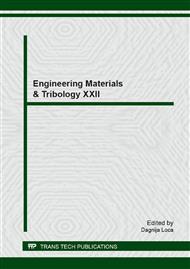[1]
A. Chatzipaschali, A.G. Stamatis, Biotechnological Utilization with a Focus on Anaerobic Treatment of Cheese Whey: Current Status and Prospects, Energies 5 12 (2012) 3492–3525.
DOI: 10.3390/en5093492
Google Scholar
[2]
B. Demirel, O. Yenigun, T.T. Onay, Anaerobic treatment of dairy wastewaters: a review, " Process Biochem., 40 8 (2005) 2583–2595.
DOI: 10.1016/j.procbio.2004.12.015
Google Scholar
[3]
J. Gelegenis, D. Georgakakis, I. Angelidaki, V. Mavris, Optimization of biogas production by co-digesting whey with diluted poultry manure, Renew. Energy 32 (2007) 2147–2160.
DOI: 10.1016/j.renene.2006.11.015
Google Scholar
[4]
H. Gannoun, E. Khelifi, H. Bouallagui, Y. Touhami, M. Hamdi, Ecological clarification of cheese whey prior to anaerobic digestion in upflow anaerobic filter, Bioresour. Technol. 99 (2008) 6105–6111.
DOI: 10.1016/j.biortech.2007.12.037
Google Scholar
[5]
E. Castelló, C.G. Santos, T. Iglesias, G. Paolino, J. Wenzel, L. Borzacconi, C. Etchebehere, Feasibility of biohydrogen production from cheese whey using a UASB reactor: Links between microbial community and reactor performance, Int. J. Hydrogen Energy 34 14 (2009).
DOI: 10.1016/j.ijhydene.2009.05.060
Google Scholar
[6]
F. Pacheco-Torgal, Z. Abdollahnejad, A. F. Camões, M. Jamshidi, Y. Ding, Durability of alkali-activated binders: A clear advantage over Portland cement or an unproven issue?, Constr. Build. Mater. 30 (2012) 400–405.
DOI: 10.1016/j.conbuildmat.2011.12.017
Google Scholar


